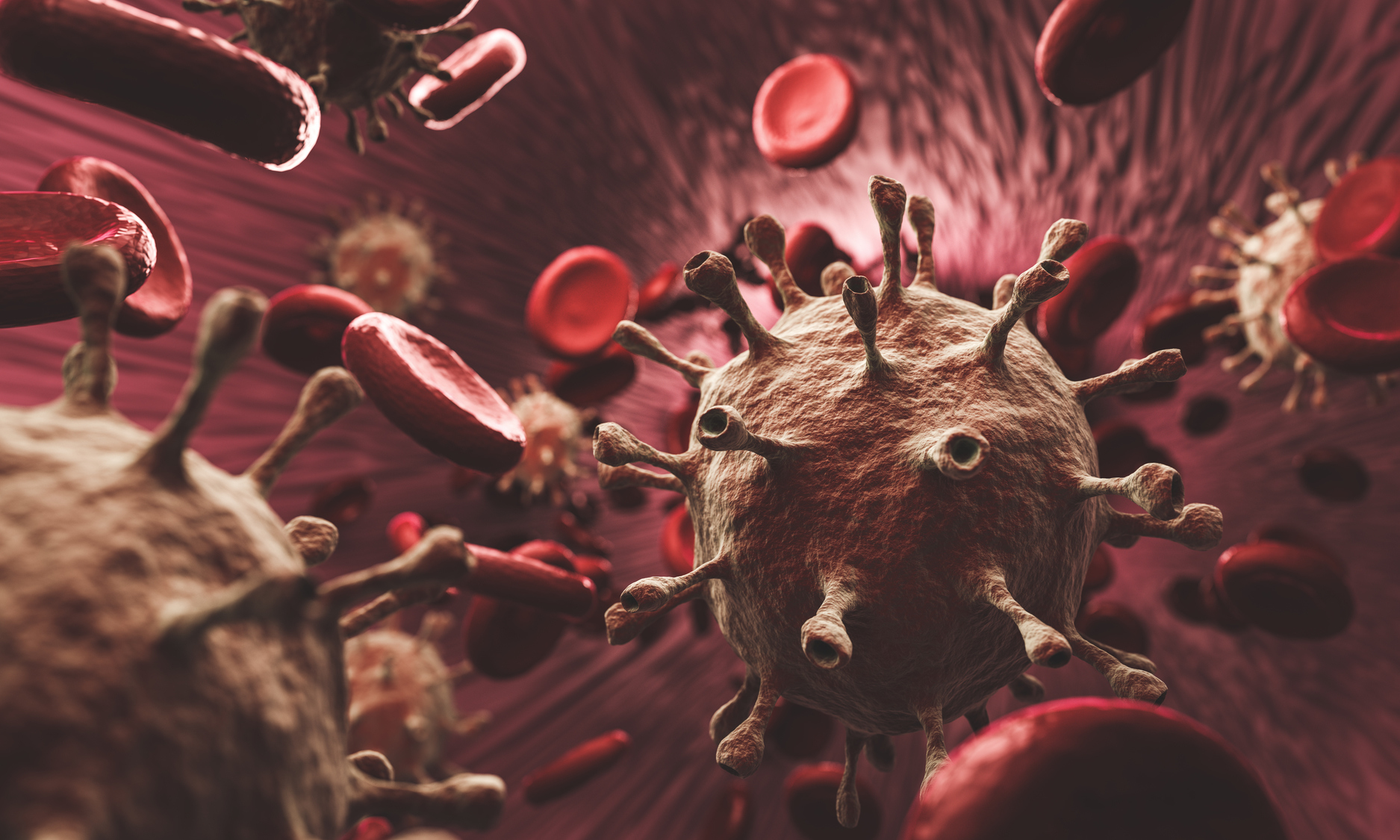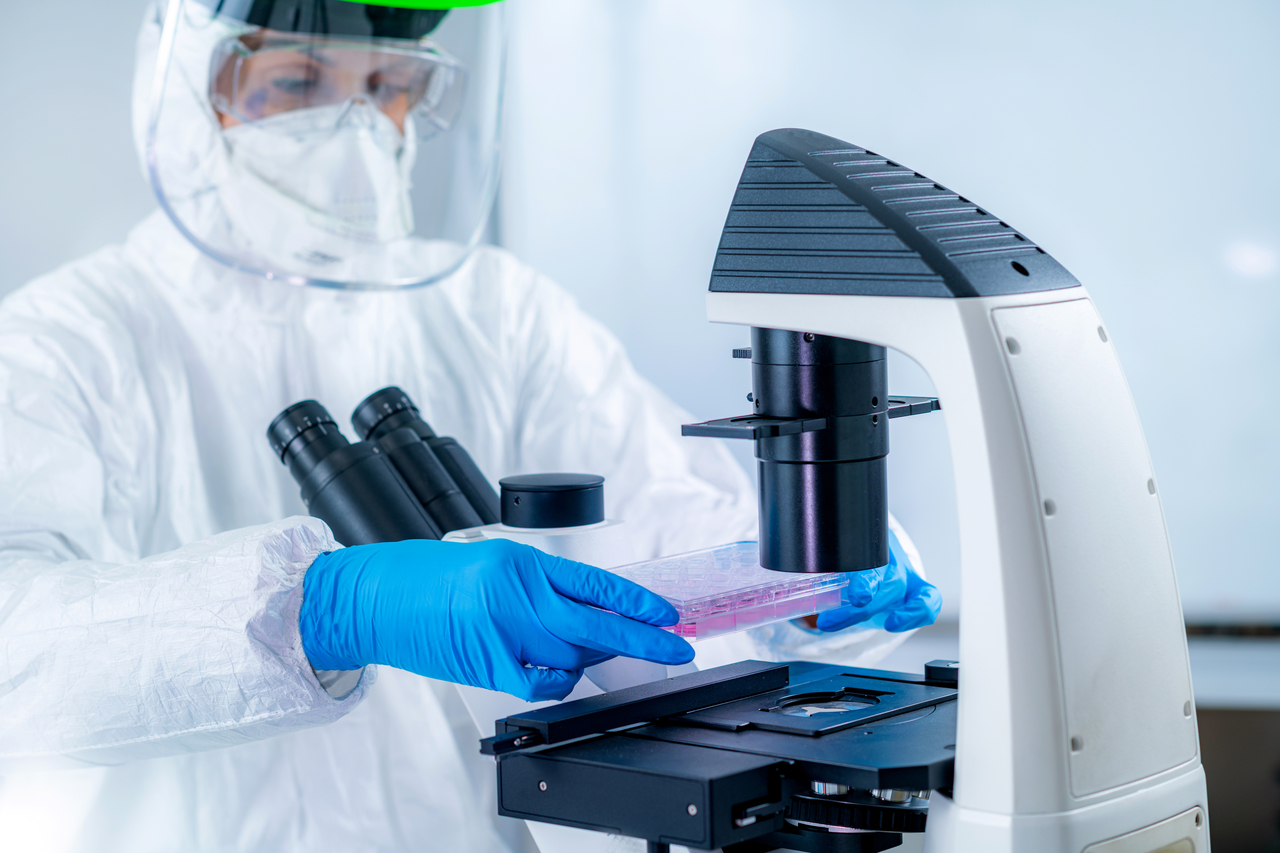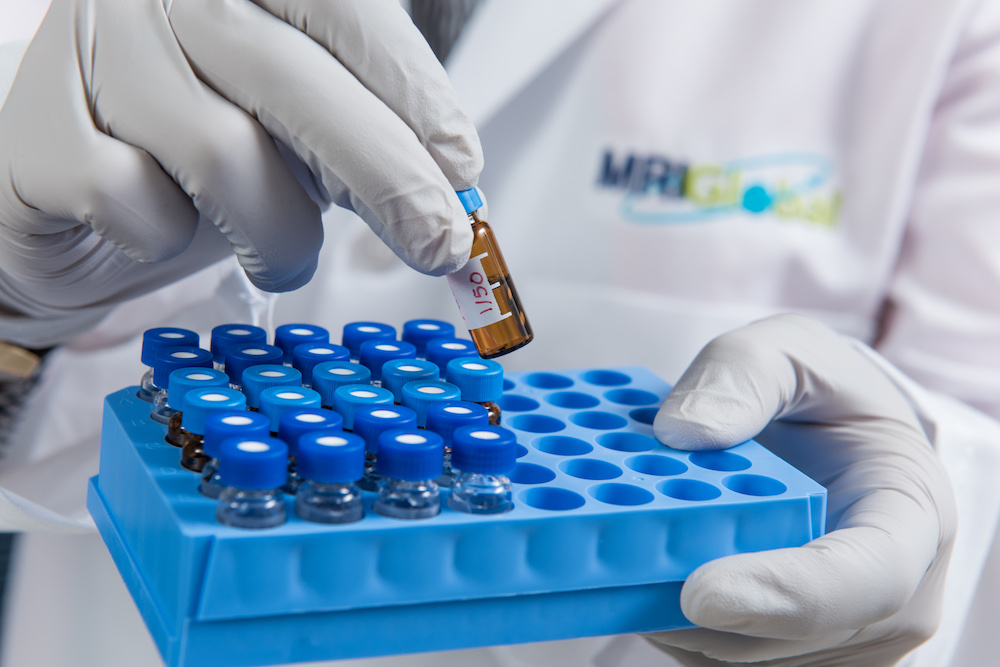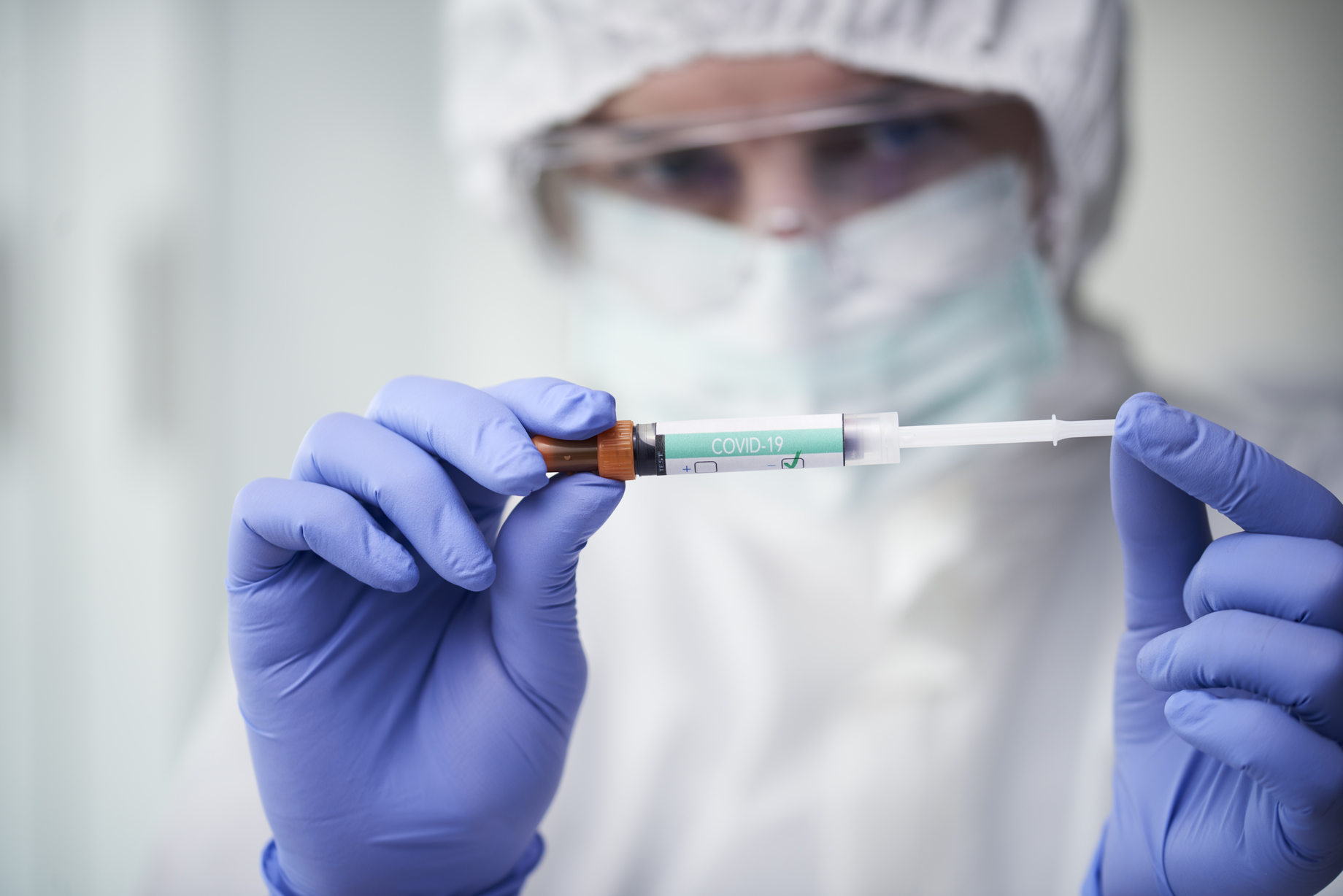With the abundance of coronavirus information, it’s crucial to separate fact and fiction.
MRIGlobal researchers and scientists are part of the international effort to develop a coronavirus vaccine.
Achieving a vaccine within an escalated timeframe involves significant government investment. We are leveraging our experience with other coronaviruses like MERS and SARS using 5th generation vaccine platform technology. To understand the timeline of a possible vaccine, the team at MRIGlobal created an in-depth guide about coronavirus and the landscape of global health in the coming months.
What is coronavirus?

Technically, coronavirus isn’t new. In fact, “coronaviruses” is a term that encompasses a genetically similar family of viruses that cause diseases such as the common cold and Severe Acute Respiratory Syndrome (SARS-CoV). Different viruses in this family can range in severity and prevalence.
Types of coronaviruses in humans
Today, there are seven known coronaviruses. The more common viruses include:
- 229E (alpha coronavirus)
- NL63 (alpha coronavirus)
- OC43 (beta coronavirus)
- HKU1 (beta coronavirus)
These viruses typically cause mild-to-moderate upper respiratory illnesses (ex: common cold). Most people become infected by one or more of these viruses at some point in their lives. Symptoms include coughing, runny nose, fever, headache, and sore throat.
In some instances, these viruses can cause lower respiratory illnesses such as pneumonia and bronchitis. This is more common in people with cardiopulmonary disease, weakened immune systems, infants, and older adults.
Along with the four common coronaviruses, there are three other known human coronaviruses. These viruses are:
- MERS-CoV (causes Middle East Respiratory Syndrome)
- SARS-CoV (causes Severe Acute Respiratory Syndrome)
- SARS-CoV-2 (causes COVID-19)
In some instances, animal coronaviruses evolve into viruses that can affect humans. (For example, SARS-CoV stemmed from civet cats.)
This transfer causes new human coronaviruses to arise, which is what happened with COVID-19 (the coronavirus causing the recent outbreak). At the moment, we do not know which animal started the current pandemic, but scientists are working to narrow down the source.
The newest coronavirus: Coronavirus Disease 2019 (COVID-19)
When you hear people discuss coronavirus on the news or in your community, they are referencing COVID-19, not the other coronaviruses. Yes, COVID-19 is genetically similar to the other viruses, but it is still its own virus. That means the coronavirus vaccine that addresses COVID-19 will also be different, and will require separate research and testing.
The COVID-19 outbreak originated in Wuhan, China in December 2019. However, unlike some speculation, that does not mean that the coronavirus is more susceptible in people who come from Asian descent.
Before the sudden outbreak that affected more than 9,800 people in China from December 31 to January 31, doctors, scientists, and researchers didn’t know about this particular virus, which is a big reason why it is creating such a whirlwind across the globe. We didn’t have a coronavirus vaccine to stop the spread.
Symptoms of COVID-19 include:
- Fever
- Fatigue
- Coughing
- Aches and pain
- Nasal congestion
- Runny nose
- Sore throat
COVID-19 symptoms are usually mild and come on gradually. Some people who have the virus may not realize that they have it, and could mistake COVID-19 for a simple cough.
According to the World Health Organization, about 80% of people recover from the disease without special treatment, but that doesn’t mean a coronavirus vaccine isn’t needed, especially for infants.
To keep things in perspective, 1 out of 6 people who get the coronavirus become seriously ill. As of March 24, 2020 about 4% of confirmed COVID-19 cases have led to death. People over 60 years of age with underlying medical conditions such as high blood pressure, heart problems, and/or diabetes are more likely to have severe symptoms.
How coronavirus spreads
Just like any virus, you catch coronavirus from someone who has it. The disease spreads via droplets from the nose and mouth. When someone coughs or exhales, those tiny droplets land on surfaces of miscellaneous objects. When other people touch those surfaces, the virus clings onto their hands. Without thinking, many people rub their nose, mouth, and eyes, allowing the virus to enter the body.
Until a coronavirus vaccine becomes available, the best approach to abating the outbreak is to take measures to prevent the spread. In your day-to-day life, you should:
- Avoid rubbing your eyes, nose, and mouth
- Wash your hands regularly
- When sneezing, cover your mouth and nose with the inside of your elbow
- Throw away tissues immediately after use
- Stay at least six feet away from anyone who is sick
- Seek medical attention if you have a fever, cough, or difficulty breathing
- Do not travel or go out in public if you have symptoms
Travel advisories, and in some cases full travel bans, have been issued for areas of high outbreak, so you should keep that in mind when scheduling (or rescheduling) any travel to sensitive countries.
In addition, those who have found themselves in the midst of an outbreak but have not yet shown symptoms have, in some cases, been evacuated in order to preserve their health. (MRIGlobal’s R&D Award-winning design of the Containerized BioContainment System was used off the coast of Japan to aid in this effort. More on this system below.)
Practicing social distancing is the key. If you can stay inside, please do so, and only leave your home when necessary for items such as groceries, medical supplies, and household items, making sure to stay a safe distance from others (six feet).
When more people get the chance to recover and fewer people are sick at the same time, we limit how many people are flooding the medical system.
The process behind creating a coronavirus vaccine

To understand how researchers and scientists create a coronavirus vaccine, you should know a few basics about vaccines.
In general, a vaccine contains the same germs as the virus it is looking to prevent. Biologically, this creates an immune response that helps our body understand the germ and adjust to fight it at a safe level before contamination can occur. Thus vaccines are usually comprised of the dead virus or a piece of one, so there is a slight risk of minor symptoms.
Therefore, when working to create a coronavirus vaccine, it’s important that a facility has both the ability to store an active version of the virus in a highly contained and monitored repository and the scientific know-how to be able to properly handle the specimen.
In addition, most vaccines include three components:
- Adjuvants to increase immune response
- Stabilizers to increase storage life
- Preservatives to enable multi-use vials
Importance of assay development in vaccine production
For a vaccine to work, its antigens must promote an immune response, meaning your immune system should create antibodies to counter a specific virus. This ability to promote a response is called immunogenicity. So without immunogenicity, you don’t have a working vaccine. Scientists don’t always know how the response occurs. There are times when, through empirical evidence, they know that a vaccine works, but they just don’t quite understand how it works. And that is where assays come into focus.
An assay is a test to measure the presence or quantity of something, such as an antibody or antigen. Assay development is a crucial stage in vaccine production because assays bridge the gap between the ‘why and how’, giving researchers insight on how a particular substance (or antigen) affects the body on a cellular level. These investigative procedures analyze compounds to determine how effective they would be as a vaccine, which can be pivotal in vaccine development.
Relating back to COVID-19, scientists and researchers can use assays in the pre-clinical and early clinical trials to determine the efficacy of compounds that could work as a coronavirus vaccine.
How vaccines are created
For the most part, scientists create vaccines using the same general process every time.
Step One: Generate the antigen
Scientists grow antigens using primary cells (ex: chicken eggs for the flu vaccine) or continuous cell lines (ex: human cultured cells for hepatitis b vaccine).
Step Two: Isolate the antigen
Afterwards, scientists separate the antigen from the cells it was created in. The antigen also goes through a purification process.
Step Three: Strengthen the vaccine
After purification, scientists strengthen the vaccine using adjuvants, stabilizers, and preservatives.
Step Four: Distribute the vaccine
To prepare for distribution, scientists fill the vaccine into vial or syringe packages, then seal them with sterile tops. From there, they label the package, which are then sent off to various facilities to administer the vaccine.
How soon will I see a coronavirus vaccine?
It’s difficult to say exactly how close we are to a coronavirus vaccine. The Food and Drug Administration (FDA) continues to do what it can to promote clinical research for COVID-19. Even so, vaccine development takes time, and it could take the rest of the year and into 2021 to discover a working vaccine that’s safe to administer.
Once that happens, costs and world-wide distribution come into play, which could affect how fast you may have access to a vaccine. Only time will tell exactly when the vaccine will be ready for public use.
For the latest coronavirus news, we highly recommend that you follow the CDC’s situation summary page, which it regularly updates with current information.
How MRIGlobal is advancing coronavirus efforts

As experts in infectious disease research, the team of researchers and biosafety experts at MRIGlobal work around the clock on coronavirus efforts. With our commercial and government clients we are:
- Evaluating the efficacy and safety of vaccines and therapeutics, as well as developing diagnostic assays to detect COVID-19 in patients and the environment.
- Developing and sharing biosafety procedures while offering our expertise and training to other organizations working with COVID-19.
- Developing and deploying flyable infectious disease containment systems and mobile diagnostic laboratories for use anywhere in the world.
Biosafety training for all
MRIGlobal also supports preparing businesses for the pandemic by sharing our expertise in biosafety and pandemic preparedness. Now more than ever, biosafety standards are incredibly important everywhere—not just in labs or medical facilities. We are working with schools, universities, private companies, large corporations, and more to create guidelines and procedures to protect health and safety.
With a situation like this, biosafety urges people to consider risk assessments each and every day. For instance, what is the risk of visiting your friends? Based on that risk, what precautions are you going to take? At the end of the day, you are in charge of what steps you take.
Engineered for the future
We design and build solutions. One of our innovations includes our Containerized Biocontainment System (CBCS), a flyable medical transport system designed to evacuate highly infectious patients to clinical centers. We are always looking for new approaches to address disease. CBCS, mobile labs, and portable labs, assist in the fight against a pandemic.
Game-changing diagnostics
Our diagnostics capability includes developing new assays and rapid diagnostics. In medical countermeasures, we are developing testing methods for an effective coronavirus vaccine.
One of our biggest focuses is high-resolution diagnostics. Viruses tend to emerge in economically-deprived places (such as areas in Asia and Africa), making the spread even more harmful. We are working hard so that one day, we can detect a virus before it comes out of those areas. For example, for zoonotic diseases, our goal is to catch the virus in animals. When we can diagnose the virus early, we can build assays and tests to stop a potential outbreak.
Think of a future where in four or five years we could have at-home tests for viruses: People could know whether they are positive right away. With early detection, we can determine who is more susceptible to a disease and more likely to have serious symptoms. Then, we can ensure those people are protected and take extra precautions before they become sick.
Who is MRIGlobal?
We are problem solvers. At MRIGlobal we use science and technology for a safer, healthier, more sustainable world. We are an independent, not-for-profit contract research organization serving government, industry, and academia. Our global health and surveillance expertise includes emerging infectious diseases, diagnostics, and vaccine development. Founded and headquartered in Kansas City, Mo, since 1944, our work also includes defense, human health, in vitro diagnostics, pharmaceutical sciences, energy, and more.
We are at the forefront of fighting against the newest coronavirus.To learn more, keep reading for everything you should know about coronavirus* and a possible coronavirus vaccine.
*This post contains information that was accurate as of March 2020. As more updates emerge, the accuracy of this information may change.
Learn more about about coronavirus with MRIGlobal
For more than 75 years, MRIGlobal has advanced scientific research across a variety of industries, and we focus on supporting better health outcomes on a global scale. For us, it’s not simply about science; it’s about the people who make it all happen.
Our solution-driven mentality drives us to find answers in even the most complex situations. Through our dedication, there’s truly nothing that we can’t do or won’t attempt to do.
To learn more about the coronavirus and the development of a coronavirus vaccine, contact us at info@mriglobal.org. You can also visit the Reddit AMA page we hosted or visit our Quora session hosted by Gene Olinger.
If you’re part of an agency, business, or academic institution seeking help with a coronavirus project, use our Project Quote Tool to get started today.

